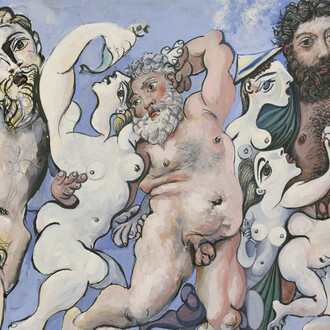As part of the Flash program of Barcelona Gallery Weekend, ADN Galeria presents The paradox of no, a group exhibition featuring works by Carlos Pazos, George Brecht, and Robert Filliou. The exhibition, which features an exhibition text written by Manuel Borja-Villel, will be open to the public from Thursday, September 18, at 12 pm.
How to avoid a piece of art turning in merchandise? Does the world need more objects? Should things and experiences continue to be compulsively produced? These were some of the questions that not few thinkers and activists asked themselves in the decade of the sixties, when it became clear that the economy and social relations revolved around consumption. Life wasn’t organized around the factory but the shopping center. And a new proletariat, without fixed schedules and with apparent freedom, started to occupy the public sphere, now transformed into a space for advertising.
Robert Filliou, Georges Brecht and others, such as Dieter Roth, Dorothy Iannone or Marcel Broodthaer, formed a network of artists that, from diverse perspectives and ways of doing, proposed alternatives to a present in which they did not recognize themselves, creating a powerful and active community located between Antwerp, Amsterdam, Dusseldorf and Cologne. Carlos Pazos did not participate in this network. However, the concerns of the aforementioned authors vibrate in his work.
The aforementioned artists created ways from what already existed. Pazos work is, in this regard, exemplary. He collects in a compelling way all kind of effects: toys, furniture, books, postcards, etc. He extracts them from the world, resignifyingthem. A Mickey Mouse or a touristic view have a certain scope for him. The viewer can more or less approximate, intuit the presence of an idea or emotion. Even so, he is aware of the opacity from a work that resists being apprehended, since it has no function, no utility. The poetic arises from what society no longer wants or understands.
Specifically, for this exhibition, the works of the three artists are organized based on four lines of work that are not explicit but easily identifiable: writing, music, the sexualized body, and food. These are four languages (or four ways of organizing language) that have a privileged relationship with absence and negation. In them, the concept of merchandise is and is not, obsessively contradicting itself. The three artists sublimate it in order to abandon it as waste. Examples of this are works with a clear musical reference, such as Brecht's Flute solo (1962), who was a gifted follower of John Cage and made the score a central element in his work.
On the other hand, a clear example of the sexualized body can be found in Carlos Pazos' series of postcards Fucking Europe (1949), filled with sexual drawings and turned into collages altogether with stamps. These pieces enter into dialogue with Monsters are inoffensive (1967) by Robert Filliou, Daniel Spoerri, and Roland Topor. Another series of postcard-sized photographs filled with irreverent doodles to explore the theme of sexuality and the censorship of the body. Food is also very present throughout the exhibition, with various bottles in works such as Madame Brulée (2023) by Carlos Pazos or the paradoxical object that conforms The bottle bottle-opener (1966-1980) by Brecht.
In all these works, we see that playfulness, randomness, whimsy, and humor are characteristic features of George Brecht, Robert Filliou, and Carlos Pazos. Hence, their political stance on issues such as merchandise and the economics of art does not result in rebellious activism that seeks direct confrontation, but rather a cryptic way of being in the world, determined to postpone the crucial moment when the artistic act takes place. Hence the important role played by collective acts as a creative process: correspondence, mail art, artistic encounters organized as happenings that ultimately do not take place, etc. Another example, Filliou's work with Emmett Williams, Spaghetti sandwich (1971), lies at the intersection of food and writing categories, transforming a cloth napkin into a piece with text composed of handwritten and typed parts of the event programme at the Galerie Raymond Cordier.
The practices of Brecht, Filliou, and Pazos lie outside the disciplines. To quote Maurice Blanchot, for these authors, the artistic act is the experience of that which cannot be taken away, of that which feels present and does not pass, because it is only traffic. Art is a transitional phenomenon. It generates an illusion in the viewer that drives them to relate to others and to an environment that, although external, is not perceived as alien. We are faced with three artists from two different generations who have perceived the problems of our time and the need to escape the art system. They have not sought to create a work of art, but rather to stop creating it.













![Saul Steinberg, The museum [El museo] (detalle), 1972. Cortesía del Museo de Arte Abstracto Español](http://media.meer.com/attachments/dfbad16c22c5940b5ce7463468ac8879f3b4bf23/store/fill/330/330/042ecf3bcd2c9b4db7ddbc57cb32e950c095835f7b5cd55b6e1576a6e78c/Saul-Steinberg-The-museum-El-museo-detalle-1972-Cortesia-del-Museo-de-Arte-Abstracto-Espanol.jpg)


